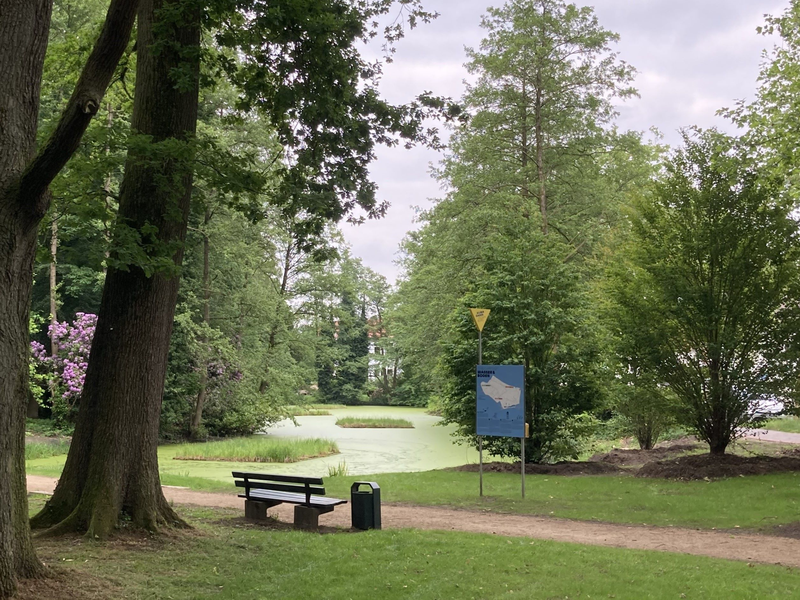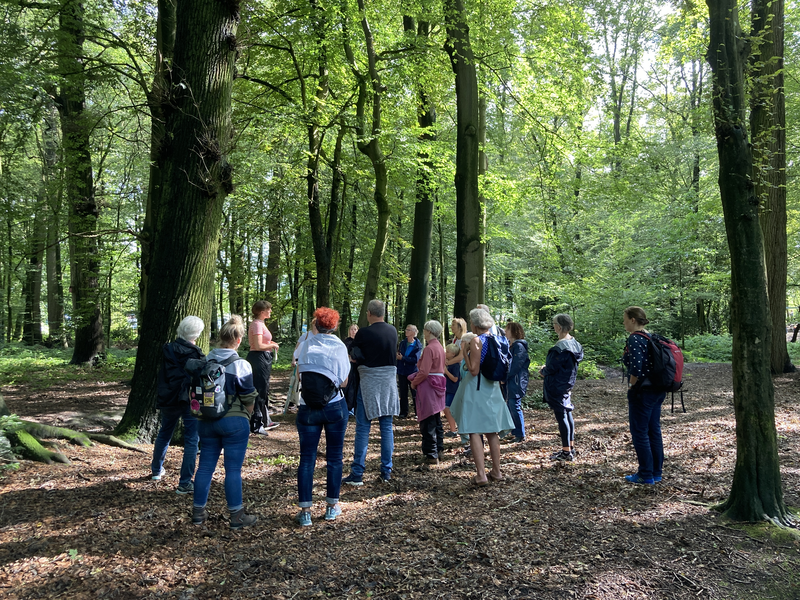All official European Union website addresses are in the europa.eu domain.
See all EU institutions and bodiesImplementing structural climate adaptation measures in two heritage-listed public parks, while addressing the urgent social need to promote sustainable thinking among the population.
Key Learnings
About the Region

Climate Threats
From 1881 to now, the average annual temperature in Lower Saxony has increased by 1.5°C. Additionally, weather patterns are shifting, with more summer days reaching temperatures above 25°C and fewer frosty days with temperatures below 0°C. Extreme weather events such as storms, heatwaves, and heavy rains that cause floods are becoming more frequent and visible in the heritage gardens. Inadequate water circulation and insufficient water retention capacity in Oldenburg’s parks are causing plants to suffer from excess or lacking water supply. Lately, increasing storm damage has posed a significant threat to ageing trees. These changes particularly affect trees in both green spaces, Schlossgarten and Eversten Holz. Therefore, rainwater retention and groundwater recharge play a crucial role in climate adaptation.
Climate adaptation is more than just structural measures – it requires an awareness shift. Through participation, science, and collective action, we preserve historic green spaces and transform them into learning hubs for a sustainable future.
Saskia Benthack, Project Manager and Curator Klimaoasen Oldenburg
Climate Adaptation in Urban Green Spaces: The Klimaoasen Oldenburg Project on Garden Monument Resilience

On-site Climate Adaptation Measures
The measures include renaturing and revitalising the watercourses and ditches in the Schlossgarten and the Eversten Holz to improve habitats and water retention, absorbing vast amounts of precipitation. Partially renewing the paths with permeable surfaces enhances infiltration capacity, contributes to groundwater formation and fulfils a cooling function.
Many trees suffering from the effects of climate change are severely weakened and infested with pests. As part of a climate-adapted replanting and new maintenance concept, alternative solutions are improving the biodiversity and durability of both green spaces. The new approach nurtures the water- and carbon-storing humus layer and preserves the heritage gardens.
Adaptation measures expand and upgrade habitats to increase the biodiversity of green spaces. Adaptive management strategies ensure future maintenance, species-rich flowering meadows, optimised nesting aids, and more.
Structural climate adaptation measures
- Removing sludge from the pond and creating vegetated islands reduces excess nutrients and purifies the water
- Rehabilitating the ditch system improves water management
- Renaturing the stream improves water retention and biodiversity
- Path renewal with water-permeable surfaces improves retention capacity
- Creating a tree register facilitates maintenance measures
- Creating a climate-adapted replanting concept supports resilient greenery
- Expanding and improving habitats improves biodiversity
In partnership with the City of Oldenburg and the University of Oldenburg, the Landesmuseum Natur und Mensch Oldenburg (State Museum of Nature and Human Oldenburg) coordinates the project‘s scientific and practical implementation. With a total budget of five million euros, the project is funded by the German federal programme “Adaptation of Urban Areas to Climate Change” and the City of Oldenburg.
The project focuses on two heritage gardens, both state-owned properties of the Niedersächsische Landesmuseen Oldenburg (State Museums of Lower Saxony in Oldenburg). To carry out the initiative, the Landesmuseum partnered with the City of Oldenburg, which is eligible and applied for the federal funding. The project received a grant of 4.5 million euros, with the city contributing 500,000 euros.
Participation & Knowledge Transfer: A Unique Approach
Klimaoasen Oldenburg features a strong social anchor, rather than purely structural measures, such as water management and replanting. Urban greenery is a natural space and a social meeting place that strengthens environmental awareness and promotes community involvement. Therefore, the project focused on citizen participation right from the beginning: Open dialogue formats, workshops, and scientifically supported participation processes opened an exchange about the importance of these places for citizens. The aim is to link human use of the natural area more closely with raising awareness of ecological processes and the importance of urban greenery. Combining scientific research, practical action and social dialogue promotes climate awareness, creates knowledge and strengthens community involvement.
To support cultural research, the Landesmuseum Natur und Mensch Oldenburg has collected qualitative data about Oldenburg’s population’s wishes for use of the parks through surveys and events. Combined with research data from the University of Oldenburg on environmental science and regional climate change, this data forms the basis for interactive hands-on facilities and a new guidance system in the Eversten Holz city forest. The hands-on facilities are experience stations or recreational concepts that invite visitors to engage in activities, relax, play or enjoy while consciously encountering the forest and its inhabitants at eye level. This meeting space provides information about the needs of urban forest ecology, raises awareness about natural processes and climate change, and enhances visitors' interest and relevance in these topics.
Diverse interactive elements for environmental education, such as a climate tour, citizen science formats and experience-oriented hands-on stations, combine learning, experience and action. This mental climate adaptation – referring to the psychological and emotional process of adjusting to the realities and impacts of climate change – campaign raises awareness for climate change and sustainable urban development, forming a key component of this participation format. Sharing knowledge in different places is a key part of the project, helping to build greater understanding and awareness of nature and its needs.


Governance
The Carl von Ossietzky University of Oldenburg supports the project through scientific research on environmental education and on-site measures, while the Landesmuseum Natur und Mensch Oldenburg leads conceptual design and project management. Due to the sites' popularity, strong community interest in preservation, and high visitor numbers, the project team focused on early public engagement and communication. To ensure effective coordination, the team created a dedicated press and public relations role and formed an interdisciplinary steering committee, which meets regularly to guide the project. The committee oversees the State Museums of Lower Saxony, as well as the management of Schlossgarten and Eversten Holz, and includes representatives from the University of Oldenburg, the City’s Office for Environmental Protection, the Lower Nature Conservation Authority, the State Office for Monument Preservation, and advisory bodies such as State Construction Management and the State Office for Construction and Real Estate, along with other experts as needed.
Model Project for Other Cities
Klimaoasen Oldenburg provides a model of how cities can respond to climate change. Besides making the physical environment climate-resilient through structural measures, mental climate adaptation, enabling citizens to better cope with the expected climate-related changes, plays a vital role in perpetuating sustainable thinking and societal approaches. Innovative local solutions make climate change tangible – at the interface of activity, nature awareness and mindfulness. Combining climate adaptation, citizen participation, and scientific support makes the project a best-practice example of sustainable urban development for other cities and municipalities to learn from and implement similar measures.
Summary
Further Information
Contact
Keywords
Climate Impacts
Adaptation Sectors
Key Community Systems
Countries
Funding Programme
Disclaimer
The contents and links to third-party items on this Mission webpage are developed by the MIP4Adapt team led by Ricardo, under contract CINEA/2022/OP/0013/SI2.884597 funded by the European Union and do not necessarily reflect those of the European Union, CINEA, or those of the European Environment Agency (EEA) as host of the Climate-ADAPT Platform. Neither the European Union nor CINEA nor the EEA accepts responsibility or liability arising out of or in connection with the information on these pages.
Language preference detected
Do you want to see the page translated into ?


